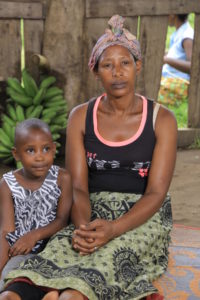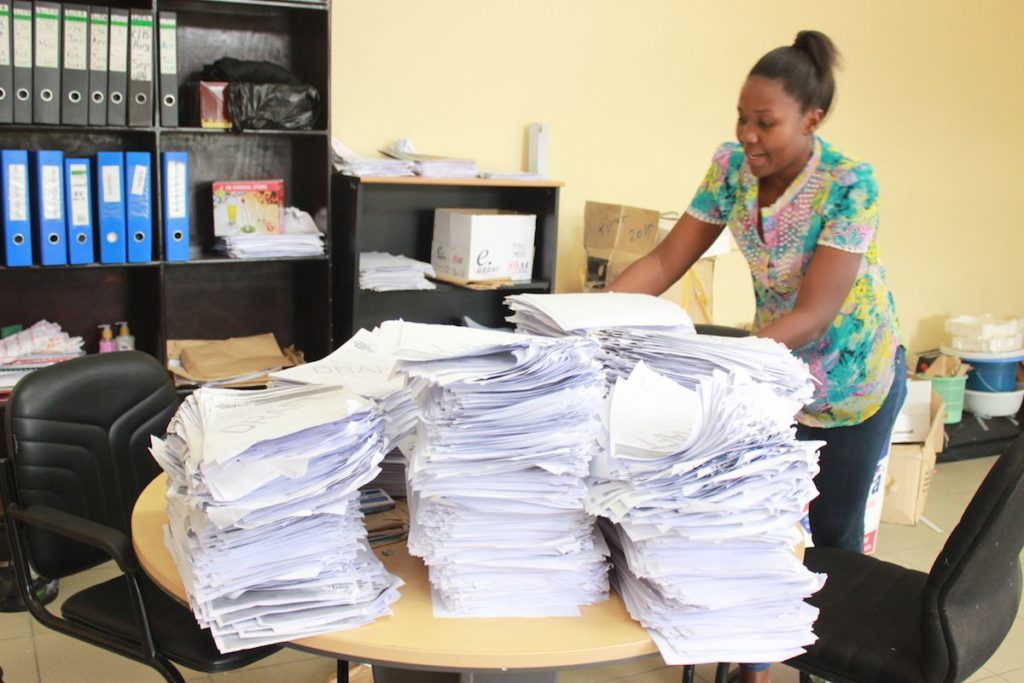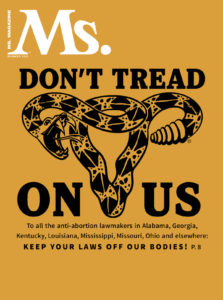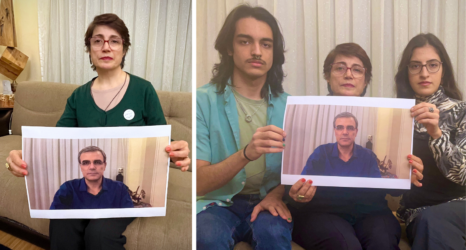When mobilizers in Uganda from the What Women Want campaign asked Kansiime Prossy to declare her top demand for improving women’s reproductive health, she offered a simple request: “Good quality health services near to women’s homes.”

Years earlier, Prossy had delivered her child outdoors at night in the middle of Queen Elizabeth National Park, surrounded by hungry hyenas.
Prossy knew the way to the maternity center: She had walked the 30 kilometers (18.6 miles) through the park for prenatal care throughout her pregnancy, but when she went into labor at 11 p.m., the journey was much more challenging. She rode by bicycle to the center with her husband, sitting behind him on the saddle while he stood to pedal. Six kilometers (almost 4 miles) from their goal, they could continue no farther and she gave birth in the dead of night in the unforgiving wilderness. When Prossy and her husband saw hyenas closing in on them, they shouted for help—and were relieved to see headlights. The National Park patrol vehicle that found them at the last second saved their lives just as surely as the health workers who stopped Prossy’s bleeding and removed her retained placenta after the rangers delivered her to the maternity center.
Prossy is one of 1.2 million women and girls from 114 countries who participated in the What Women Want campaign created by the White Ribbon Alliance (WRA). Her story exemplifies the urgency behind their mission.
“The origins of this campaign,” WRA deputy executive director Kristy Kade told Ms., “are as grassroots as grassroots can possibly be.” In 2016 in West Bengal, India, a local WRA chapter recognized, through face-to-face conversations with local women about their needs and experiences, that lawmakers advocating for them were missing the mark.
“There was such a missing voice from the planning that was going on in terms of India’s care, and the rollout of their new guidelines about improving maternal health services for women,” Kade explains. “It was being done in a vacuum, without ever really talking about the experiences of women.” The WRA team in West Bengal came together with more than a hundred allied organizations to expand the effort nationally and launch a campaign they called Hamara Swasthya, Hamari Awaz—“Our Health, Our Voices”—that eventually gave women unprecedented influence over the agenda setting that shapes their own lives.
“It caught on like wildfire,” Kade recalls, describing the effort mounted by volunteers to ask women across the country what they needed and wanted to see change in terms of reproductive and maternal health care in their communities. “When they started, they thought they might get 10,000 responses. By the end—they did this for three months—they got 150,000.”
Those responses became powerful leverage for advocates. The collective power of women’s voices in West Bengal had created enough political pressure to grant them a seat at the table. The results of the campaign were shared with local leaders, who were persuaded to pay more attention to critical health care issues facing women. When those local leaders passed the results upward to ministers and parliamentarians, the campaign became fodder for national news coverage—and forced lawmakers to respond by shifting the focus of their health care policies.

In 2017, during her first week working with WRA, Kade and her team began building out the model on a global scale. Despite the necessary customizations and adaptations for the campaign which allow each to flourish in their own cultural context, the mobilizers worldwide were unified by a singular mission, as Kade summarizes: “putting our mouths and our minds behind the idea that we need to ask women, they should be heard, they should be listened [to], they do know best about their own health care needs. They’re the real experts.”
Radically restructuring the model of health care advocacy, and putting power back in the hands of women patients, marks a revolutionary shift in and of itself—especially during a moment in which the Trump administration’s expanded Global Gag Rule is attempting to restrict women’s choices by cutting U.S. funding for any foreign organization that promotes or provides abortions worldwide.
The transformative power of the campaign began with the question at its core. Asking women what they want, the WRA team realized, was revelatory.
“It shouldn’t be radical,” Kade observes, “but it was.” For many women, it was one question they’d never been asked before. “There was sometimes a lot of: Why are you asking me this? Why do you care? Why would anyone care?” she explains. “Convincing them that their voice had power and significance and resonance was the transcending moment… That invitation to speak is what so many women have been waiting for.”

The campaign’s mobilizers, some of whom collected responses on social media and others who trekked through regions on foot to give women space to speak, bore witness to the impact of that invitation.
“It has been an amazing journey,” Talha Rasheed, a journalist in Karachi, Pakistan, told WRA. “I met with young girls, teenagers and women from all walks of life. Some were pessimistic; others were optimistic; all were victims of different levels of abuse. However, What Women Want gave them a platform to speak their hearts and make our voices heard by government. It gave wings to the women of Pakistan.”
“People needed to speak,” Kade declares. “What we really were interested in is what everyone individually wants, and that has power… It’s seeing not the doer or the done to, but [that] we all have needs, we all have interests, we’re all experiencing health care in a complicated way, and we need to express that. That’s where the real power comes from.”
Click here to read more about the What Women Want Campaign.

This piece appears in the Summer 2019 issue of Ms.
To read more global news coverage like this, and snag a copy before it hits newsstands, become a member today!
To read more from the issue, check out the excerpt archive.





